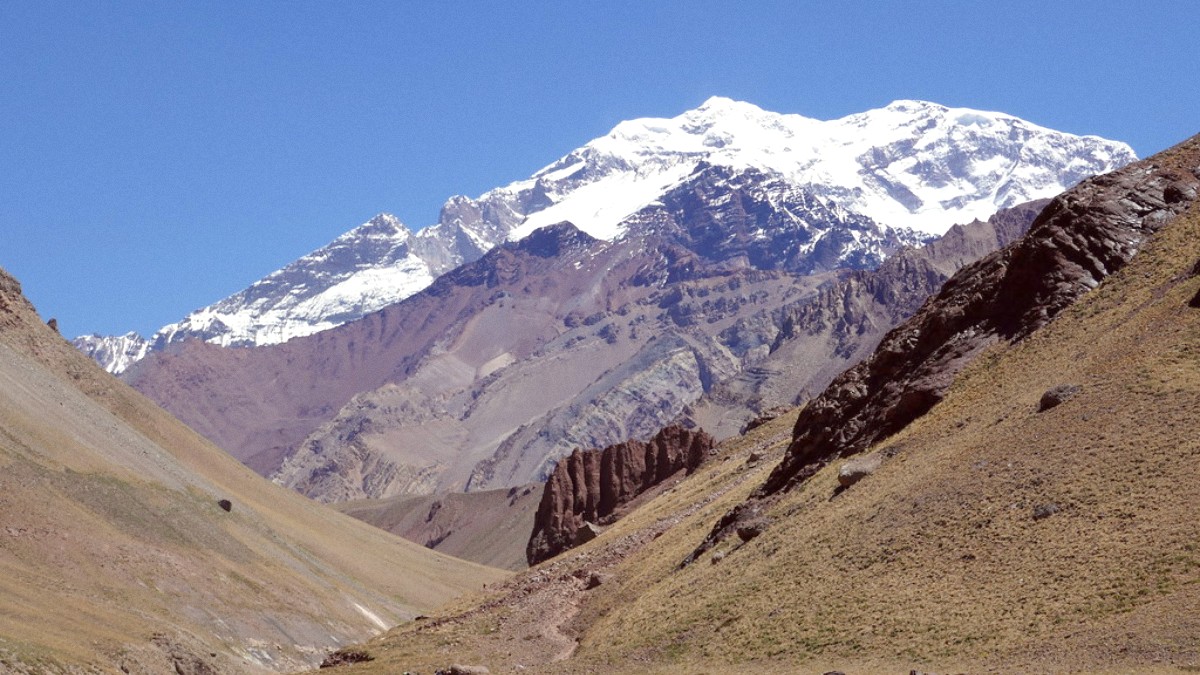
Central Argentina, Argentina
Argentine cuisine in Mendoza is influenced by large waves of Spanish and Italian immigration. The region's identity is defined by its agricultural output: grapes for wine, olives for high-quality olive oil, and various fruits and vegetables.
Meat, especially beef, stands central to the diet, reflecting the country's Gaucho traditions. The culture of asado (barbecue) is a cornerstone of social life.
Cheeses, notably provoleta. Dulce de leche, a thick, sweet caramel spread. Oregano, parsley, paprika, and cumin are frequently used. Chimichurri for grilled meats.
Mendoza's cuisine is broadly consistent, with a strong emphasis on pairing food with local wines. Wineries often feature high-end, multi-course meals.
Lunch is typically 1 PM to 3 PM. Dinner starts around 9 PM or 10 PM. Asado is a social event. Mate is a social ritual. Bread usually complimentary. Wine is expected with meals.
The quintessential Argentine barbecue with various beef cuts, chorizo, and morcilla.
Find it at Parrillas (steakhouses).
Baked savory pastries, typically with spiced diced beef, often with olives and hard-boiled egg. Crisp, golden crust.
Widely available at bakeries, cafes, and empanaderías.
Popular steak cuts: tenderloin (lomo) or thick-cut sirloin strip (bife de chorizo), grilled to perfection.
Find them at any Parrilla.
Choripán, Pancho (Argentine hot dog), Garrapiñadas (sugared peanuts).
Dulce de Leche, Alfajores, Helado (Argentine ice cream), Facturas (sweet pastries).
Many high-end wineries offer exquisite multi-course tasting menus paired with premium wines. These often need reservations well in advance.
Numerous options in the city center and along Aristides Villanueva Street. These offer good quality Argentine, Italian, and Mediterranean food.
Traditional, no-frills eateries (Bodegones) offering large portions at low prices. Great for experiencing local flavors.
Mendoza is becoming more accommodating for vegetarian options. Many restaurants now have vegetarian sections.
Vegan options are growing, especially in trendier areas like Aristides Villanueva. Look for specific vegan restaurants or cafes.
Awareness for gluten-free (Sin TACC) is increasing. Some larger supermarkets may have gluten-free products.
Communicate your needs clearly. Write down your specific allergies in Spanish to show restaurant staff.
Learn to make traditional Argentine dishes like empanadas.
Create your own bottle of wine at some bodegas.
Olive oil mills and organic farms offer tours.
Vendimia features extensive food stalls and regional specialties.
Mendoza is a major producer of olive oil. Many producers offer tours and tastings.
This is a good alternative or addition to wine tours.
Dining at a winery, often with a multi-course menu paired with on-site wines, is a quintessential Mendoza experience.
Many have stunning vineyard views and a relaxed, elegant atmosphere.
Choripán, Pancho, Garrapiñadas from street vendors. Mercado Central for prepared foods.
Dulce de Leche (national obsession), Alfajores, Helado (Argentine ice cream comparable to gelato).
Dining at a winery with a multi-course menu paired with on-site wines. This is a quintessential Mendoza experience.
Learn to make traditional Argentine dishes like empanadas, asado, or pasta from private chefs or guesthouses.
Visit olive oil mills (Olivícolas) for tours and tastings. Some organic farms also offer visits.
Malbec is the flagship. Also explore Cabernet Sauvignon, Bonarda, and Torrontés (white).
Wine accompanies most meals.
Mate is a bitter, caffeinated herbal infusion and a cultural ritual.
Fernet con Coca is a popular mixed drink, especially among younger generations.
For a truly Mendoza experience, prioritize a winery lunch. It combines gourmet food, wine pairing, and stunning views for a memorable afternoon.
Empanadas Mendocinas, with their distinct crisp crust and flavorful fillings, are a local must-try snack or light meal. Seek them out at dedicated empanaderías.
Mendoza's olive oil production is significant. Consider a visit to an olivícola to learn about the process and sample high-quality local oils.
Dinner in Argentina typically starts late, around 9 PM or 10 PM. Plan your evening meals accordingly, as many restaurants do not open before 8 PM.